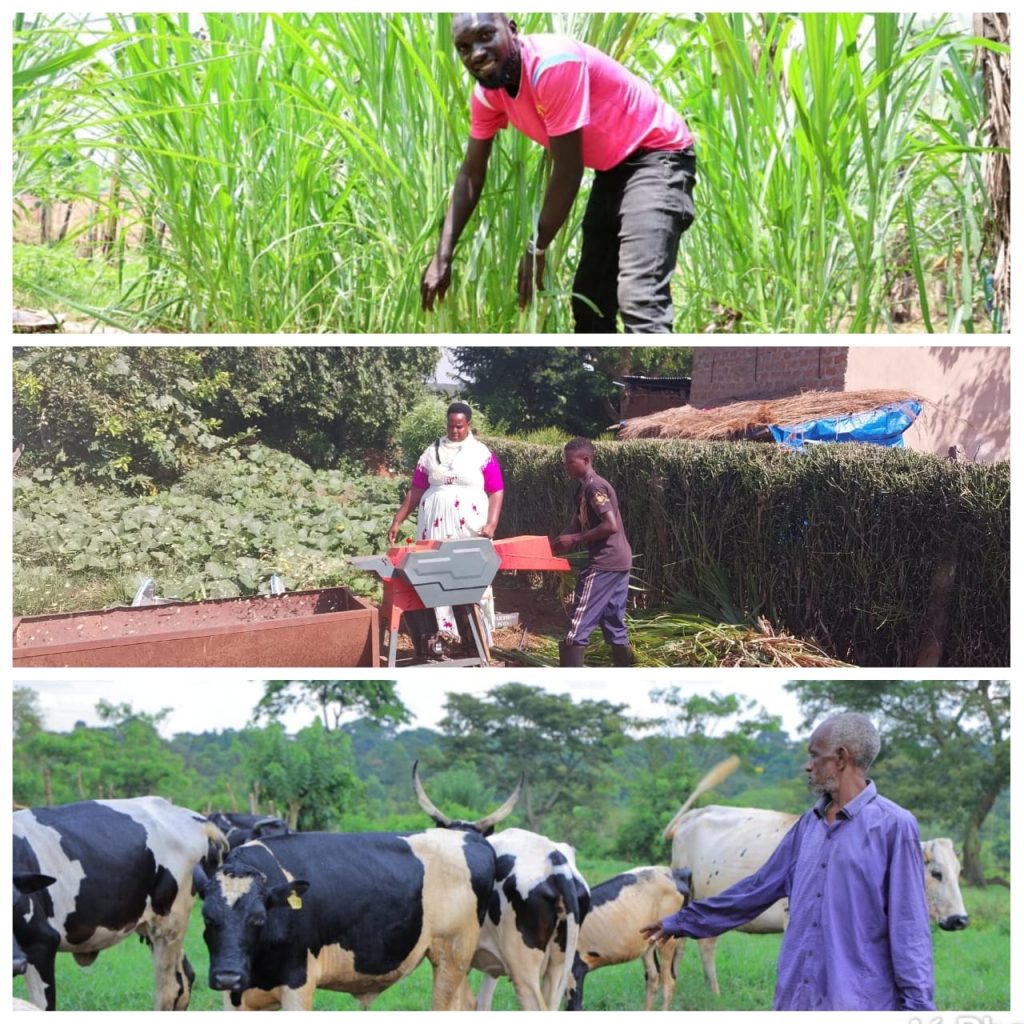Farmers in Nakaseke District have joined hands with Heifer International Uganda to promote climate-smart dairy farming under the Distributed Renewable Energy Ecosystems Model (DREEM) project, a three-year initiative aimed at increasing productivity through solar-powered solutions.
Grace Kansiime, a dairy farmer from Ngoma Town Council, says prolonged droughts had previously devastated her herd and income.
“When we were struck with drought, our animals lacked what to eat, and all the dams would dry up, which made it difficult to feed the animals, resulting in the death of some cattle while others were sold off cheaply,” Kansiime said.
She explained that support from Heifer International has helped her adapt to the changing climate through the provision of pasture seeds and solar-powered technologies.
“The pasture seeds provided by Heifer have enabled me to sort out my feeds problem faced in the dry season and currently my cattle now feed on fresh pasture which has helped boost my milk production where I milk 20 liters in the evening which I store in the solar powered fridge and 40 liters in the morning from a mere 10 to 20 liters and has also helped preserve the 15–20 liter jerry cans of yoghurt she makes a week which she sales,” Kansiime said.
Kansiime is among several farmers benefiting from the DREEM Hub Project, which is implemented by Heifer International with support from the Mott Foundation. The initiative, running from 2024 to 2027, promotes the productive use of solar energy to improve livelihoods and resilience among smallholder farmers in Uganda’s agricultural value chains.
Rwakyaka Benon, a farmer from Ngoma Sub-county, shared similar experiences.
“Before the DREEM, I made a lot of losses during the drought due to the lack of feeds and water for the cattle since the valley dams dried,” he said.
Rwakyaka added that Heifer International provided him with solar pumps, panels, and pasture seeds at subsidized prices, allowing him to grow and preserve enough feed for his animals.
“With the improved agriculture practices through the DREEM initiative, I have seen a boost in my milk production. I am able to get over 50 liters of milk a day (35 liters in the morning and 15 liters in the evening) which I store in my solar powered fridge which helps in preservation,” he added.
At Balatira Village in Naluvule Parish, 77-year-old farmer John Baptist Sserwadda showcased his cattle and demonstrated fodder preservation techniques he learned from Heifer International. He praised the organization and the government for their support, which he said has improved his cattle management and income.
In Kiwoko, 28-year-old cattle farmer Samuel Sewankambo said that working with Heifer International under the DREEM project has helped address challenges of inadequate pasture and feed.
Sewankambo said the project has boosted milk production and improved livelihoods for many farmers. He noted, “The project provided me with high-quality grass seeds, which I planted, harvested, and made into silage for the cows.”
Heifer International Uganda Country Director, William Matovu, said the main goal of the DREEM project is to strengthen the Productive Use of Solar Energy (PUSE) in agriculture.
“The project targets to empower 20,000 smallholder farmers as well as provide PUSE skills, jobs, and PUSE entrepreneurship opportunities to underserved youth and women entrepreneurs across the value chain of dairy farmer cooperatives in Uganda, fostering sustainable incomes, providing access to safe water, and strengthening resilience to climate change impacts,” Matovu said.
He added that the initiative aims to reduce greenhouse gas emissions and build resilience among farmers against climate change shocks.
According to Edna Nyamwaka, Project Manager at Heifer International Uganda, the DREEM program serves both as an adaptation and mitigation strategy to address climate change.
Nyamwaka explained that agriculture both contributes to and suffers from climate change due to its reliance on fossil fuels along the production chain.
“Through the DREEM program, the adaptation to deploy energy and water solutions will help farmers respond and mitigate the greenhouse effect by replacing diesel with solar. Cooperatives spend 40 percent of their operational costs on diesel fuel, maintenance and repairs and lose 5 to 10 percent of their revenue due to power shortages which results into poor-quality milk sold at half the price on the open market,” she said.
She added that in Nakaseke’s cattle corridor, the use of unsafe valley dam water had affected milk quality. To address this, Heifer International helped establish the Nyakalongo Water Supply System — a cooperative-run community water project that now serves 700 families.
Nyamwaka said the program has also supported seven community-based model farms to adopt solar and water solutions and helped three cooperatives install commercial-scale solar systems for their milk collection centers.
Through such interventions, Nakaseke’s farmers are now producing more milk, earning better incomes, and building resilience against the harsh effects of climate change.
